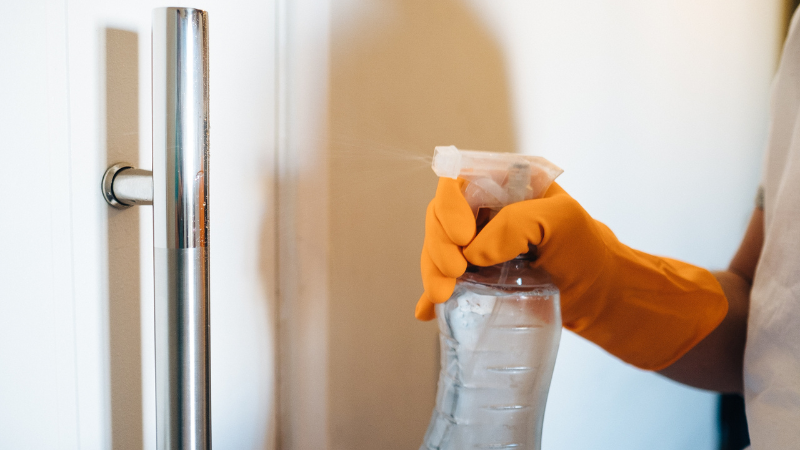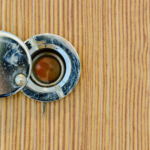Among the most popular colour choices for both internal and exterior doors is probably classic white. It matches every interior, it’s easy to apply, and the paint is affordable. Moreover, uPVC doors tend to always come in glossy white – meaning that most patios have white doors leading to them. Among the downsides of white, however, is that it shows up dust and grime quite easily, and for this reason, regular cleaning is essential.
White doors come in several sorts. Wooden doors offer a distinctive look, but they typically demand more maintenance than their metal and uPVC counterparts. With a little cleaning every so often, however, you’ll be able to keep your white wooden doors looking their best. Here, we’ll take a look at the best way to clean your white doors, and thereby keep them looking fantastic throughout the year.
What should I use?
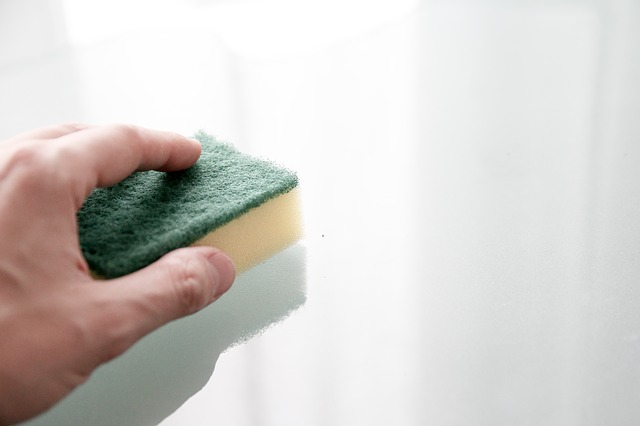
A simple solution of washing up liquid and water often does the job. But before you break out the sponge, it’s worth first dusting your door to remove any loose particles. If you don’t do this, then that dust will clump together and become difficult to move. Pay special attention to the joins between panels, as this is where said dust is most likely to accumulate.
Provided that you keep the concentration of washing-up liquid down, the chance that your white door will discolour is minimal. With that said, it’s worth testing your chosen cleaning solution on a small area of the door first, to be on the safe side. Once you’ve determined that the mixture is good, you can get to work. Lay down a blanket (or some newspaper) to catch stray drips. You don’t need to overload the sponge, or to apply too much pressure. Work with the grain rather than against it, and re-soak the sponge regularly.
What about stains?
If you have stains that won’t shift, no matter how much washing-up liquid you use, then you’ll need to break out a more caustic solution. This usually means something acidic. Adding a little white vinegar to your cleaning solution will help to break down the stain – but we need to be careful here, as too much vinegar risks damaging the finish. Again, test it on a small bit of your door, in case the solution causes the paint to peel away.
What about glazing?
Doors which come with glass panels will need a slightly different approach. This is where a more concentrated vinegar solution can work wonders. Combine one-part vinegar with one-part water and apply it with scrunched-up newspaper. This is inexpensive, and won’t leave tiny lint fibres behind in the same way as a standard paper towel. The average newspaper is made from rough, moisture-absorbing fibres, which will buff that glass to a gleaming finish.
For the best possible finish, invest in a chamois leather cloth and buff the surface until it’s gleaming. You might need to go over the same area a few times for the best possible results – but in the end, it’ll be worth it!
How to Clean a White Metal Door
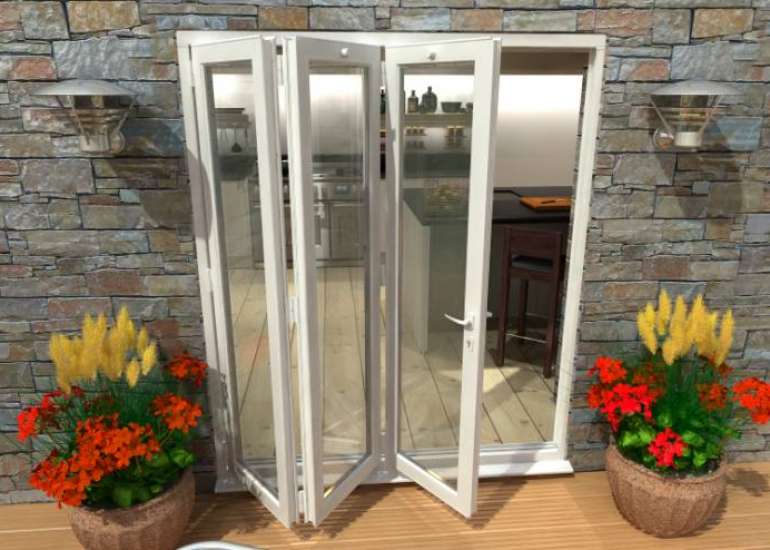
Metal doors require a different approach than wooden ones. Usually, it’s external doors and garage doors that fall into this category. If you live in a contemporary apartment with sliding doors leading to a balcony, or you’ve got aluminium bi-folds fitted to your patio, then you might wonder how best to treat yours.
The good news is that metal can withstand slightly more abrasive chemicals before it begins to discolour. Thus, you’ll be able to take your washing-up formula and add a dash of TSP. You can then load the solution into a spray bottle and get to work. If you’re applying this formula directly using a sponge, then be sure that you’re wearing suitably substantial rubber gloves.
If you’re cleaning an internal door (or the internal side of an external one), then you’ll need to again protect the bottom of the door using a towel or some loose newspaper. Once you’ve gotten the entire door covered with a fine spray of TSP, you can leave it for a few seconds to loosen the grime. Then you’re free to wipe down the door with a rag.
You might find that certain parts of the door require a few passes before they’re looking entirely clean. Most modern patio-doors are powder-coated in the factory. This is a very resilient coat of paint which not only looks fantastic but which also resists scratches and staining capably. If you have a door of this sort, then your work might well end after a quick wipe-down.
Other types of paint, on the other hand, may eventually blister and peel. External garage doors, for example, might need a fresh coat every so often. Metal doors of every sort will benefit from a mechanical lubricant like WD40, which will not only clean away all of the dirt that might have accumulated, but it’ll repel stains that might build up in the future.
How to Clean a White Front Door
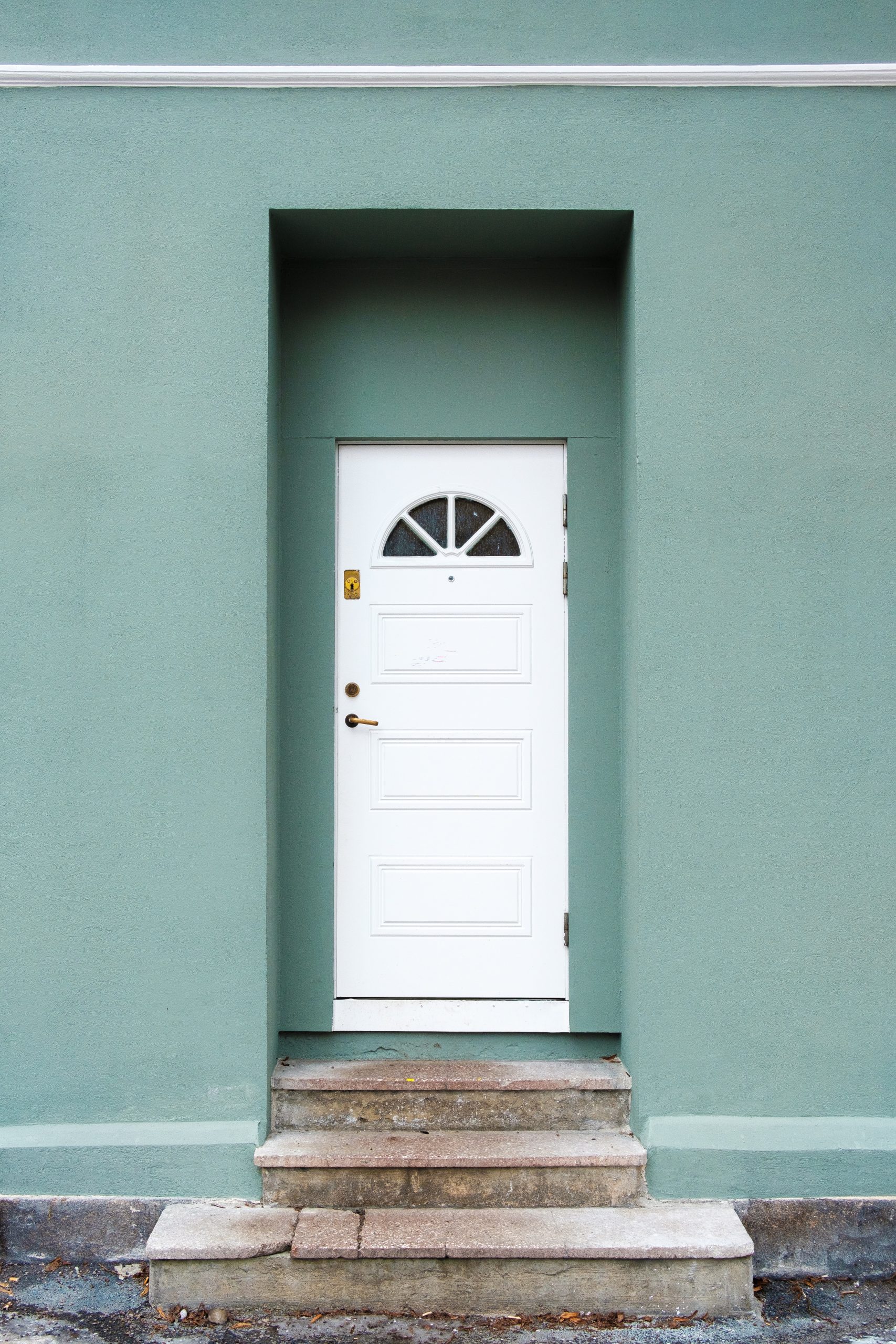
If you’re looking for how to clean a white uPVC front door, then you’ll be pleased to learn that there’s little work involved. One of the advantages of the material is that it’s naturally resistant to grime. The glossy surface will prevent dirt from sticking, and thus all you’ll need to do is apply a damp cloth and wipe the offending muck away.
In cases where your white uPVC front door has become discoloured or scuffed, however, you might be out of luck. Over time, some cheaper varieties of uPVC will begin to turn distinctly yellow, usually as a result of exposure to ultraviolet light. Similarly, scratches in plastic cannot be repaired in the same way that scratches in timber might be – and you can’t sand down and replace plastic. As such, damaged uPVC doors will usually need to be replaced.
So there you have it, cleaning your white doors of all types isn’t as daunting as it seems, and with a little work, you’ll have them looking sparkling in no time!


